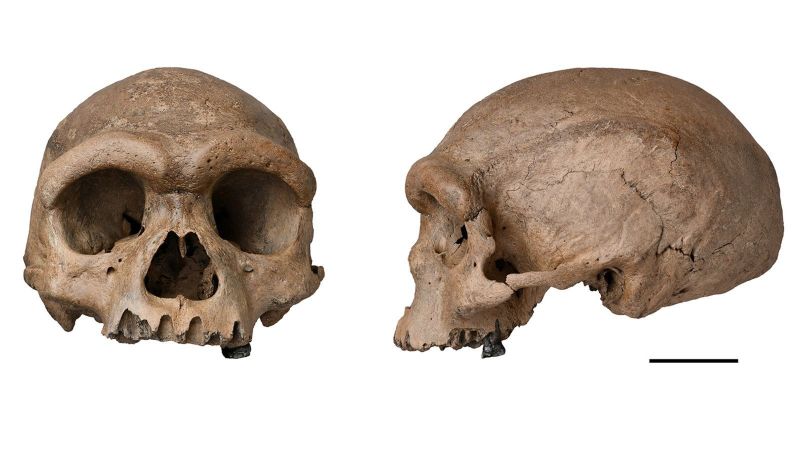The exploration of our ancestry highlights the intriguing interactions and interbreeding among ancient human species. Tens of thousands of years ago, Homo sapiens coexisted and mingled with other prehistoric humans, notably the Neanderthals and Denisovans. While significant fossils of Neanderthals have provided a comprehensive understanding of their physical traits and social structures, the Denisovans remain shrouded in mystery due to the scarcity of tangible evidence. To date, these early relatives do not even have a widely recognized scientific designation, reflecting the gap in our knowledge concerning their existence.
Recent advancements in genetic research offer a glimpse into the enigmatic world of Denisovans. Evidence of their presence has primarily emerged from DNA traces discovered in contemporary human genomes, paired with a handful of skeletal fragments unearthed in remote archaeological sites. The revelation of a 146,000-year-old skull, retrieved from a well in China in 2018, may provide crucial insights into our evolutionary history. Dubbed “Dragon Man,” this remarkable find does not correspond to any previously identified prehistoric human species.
Two groundbreaking studies shed light on the significance of this fossil, regarded as pivotal contributions to paleoanthropology this year. Researchers successfully extracted genetic material from Dragon Man, uncovering that he shares a lineage with the Denisovans, early humans believed to have roamed the Earth between approximately 500,000 and 30,000 years ago. This discovery could reshape our understanding of human evolution, illuminating a time when various human species coexisted and interacted.
However, the scientific community is not fixated solely on human ancestry. Astronomers grapple with the mysteries of the cosmos, including the elusive nature of “dark matter.” Yet, they also seek to explore the complexities of baryonic matter—the matter composed of protons and neutrons that constitute the universe we are familiar with. This type of matter is dispersed throughout intergalactic space in a form resembling fog, making it challenging to measure quantitatively. A recent study demonstrates how researchers have successfully observed baryonic matter by analyzing fast radio bursts, providing greater insight into this perplexing matter.
The quest for knowledge extends beyond the cosmos into the depths of our oceans. In an unprecedented breakthrough, scientists captured the first video footage of a rare 3-foot-long squid thriving in its deep-sea environment. Further, archaeological excavations in Great Britain have unveiled stunning frescoes decorating the walls of a luxurious villa, leading researchers to label the site as the “Beverly Hills” of Roman Britain. These frescoes, featuring floral designs and vibrant landscapes, had been methodically reconstructed by experts from the Museum of London Archaeology.
Tools and materials used in the construction of ancient Roman sites provide valuable context for understanding their lifestyle and artistic expressions. The Romans invaded Britain in AD 43, establishing Londinium as a precursor to modern London, with their occupation lasting almost four centuries, influencing the social and cultural fabric of the area.
In an unexpected twist, scientists have discovered that methane—a potent greenhouse gas—can transform into a nutritional resource in the deep ocean. Ignored in bright daylight, methane becomes a food source for certain sea spiders inhabiting methane seeps. These extraordinary marine spiders thrive in darkness, sustaining themselves through bacteria that transform carbon-rich methane into consumable sugars and fats.
Amid the scientific advances this week, other fascinating stories have emerged. A SpaceX Starship rocket met with an explosive setback during a routine ground test, igniting discussions about the impact on ambitions for Mars exploration. Meanwhile, in Australia, a tiny moth displays extraordinary navigational skills, covering 600 miles at night using stellar alignments. Additionally, researchers have reconstructed the visage of a prehistoric woman from Belgium dating back approximately 10,500 years, revealing early variances in skin color across human populations.
The constant pursuit of knowledge in both the ancient and cosmic realms continues to unfold, presenting humanity with intriguing narratives begging exploration and understanding, fueling our curiosity about what lies ahead both on Earth and the universe beyond. As discoveries abound, subscribing to science newsletters ensures that enthusiasts remain informed about the latest scientific revelations, allowing for a deeper appreciation of the wonders of both our past and what is yet to come.



